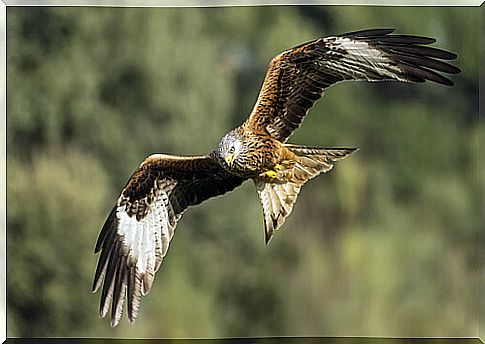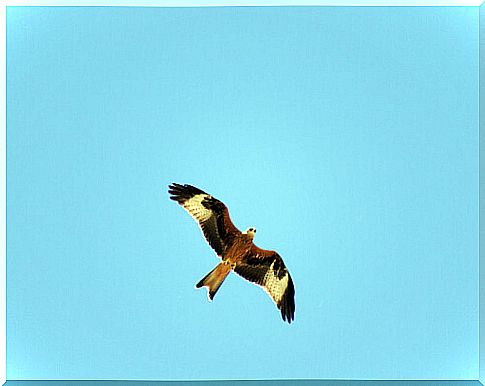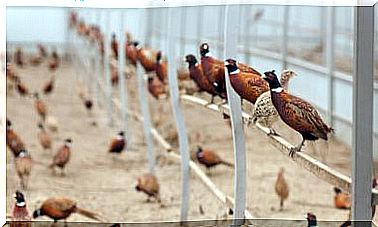Everything You Need To Know About The Red Kite

The red kite is a species of bird of prey native to Europe. Its stature and physiognomy resemble the black kite, but it is distinguished by the grayish color of its head. It is used to feeding on small or inert animals; it has a varied and sometimes scavenger diet.
Its scientific name is Milvus and it comes from the Accipitridae family, which is characterized by its curved beak. In addition, it has strong claws, very useful when hunting, as well as a good sense of vision, ideal for identifying its prey from a distance.
Like many other species, the red kite is currently considered an endangered bird. The main cause is the action of man on their habitat and customs; among the most common reasons for his death is induced poisoning. Its current situation is outlined in the Red Book of Birds of Spain.
Characteristics of the red kite
The red kite is a game bird that has a length of 60 to 65 centimeters. In flight it can achieve a wingspan of up to 170 centimeters, thanks to the spread of its large wings. Its weight can range from 900 grams to 1.2 kilograms.

One of its main characteristics is the color of its feathers; In them, a reddish chestnut stands out that becomes darker and striped in the belly area. On the other hand, the plumage on its head has a pale grayish hue, which is much lighter in young specimens.
The red kite is a species that is easily distinguished among the members of its family, thanks to its appearance. The orange color of its spread wings stands out, as well as its very forked tail ; It is a bird that is very stylized in its pose.
What are the customs of the red kite?
Due to its medium size, its hunting abilities are different from other taller Accipitridae. It usually takes advantage of small animals such as rodents, or inert animals such as small reptiles; It can also attack sick animals whose mobility is limited, which has given it a reputation as a scavenger.
The red kite has a varied diet. In its diet it includes hares, rabbits and field mice, also smaller birds or small mammals. During the winter it is common to see it eat crickets or some remains of dead animals.
To hunt, the red kite makes use of its good sense of vision. Its large wings allow it to swoop in on its prey and beat short distance races ; later, with its claws it retains the food until it can eat it with the help of its hooked beak.

How does the red kite live?
The red kites usually live in forests and countryside, accompanied by other family members such as eagles or black kites. They have their origin in Europe, and they inhabit a large part of Spain including the Canary Islands and the Cape Verde Islands; they also have a presence in France and Germany.
During the winter they usually move to the warmer areas of Spain, including those who come from other European countries. Interestingly, a large number of these specimens reach Africa through the Strait of Gibraltar.
To nest they choose trees at the foot or in the middle of the mountain, where they also hide waiting for rodents. Their nests are elaborate with branches and leaves, and the laying can be from one to three eggs. During the incubation period, the male substitutes for the female when she needs to feed.
The red kite and its risk of extinction
The total population of red kites in Europe is estimated to be between 19,000 and 24,000 pairs. The decline of this species in Spain has been significant since the 1990s, hence it has been included in the “endangered” chapter of the Red Book of birds in Spain.
Currently , the red kite is the victim of many actions that put its species at risk. Some of them are the transformation of their habitat due to unplanned deforestation and even poor handling of remains in slaughterhouses. They are also victims of poisoning by baits for other animals.








